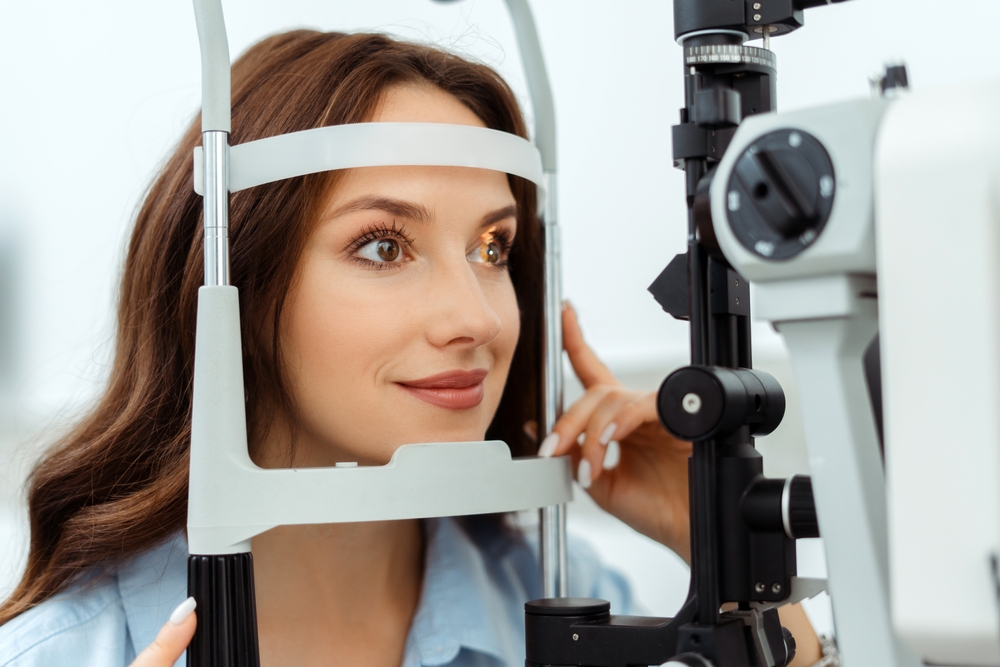Laser eye surgery has become increasingly popular in recent years. However, using laser eye surgery to correct refractive errors isn’t as new as you may think. It was developed in the late 1980s.
Vision correction technology today has advanced far beyond these early forms of laser eye surgery, improving safety and effectiveness. Laser eye surgery isn’t the only way to correct your vision anymore.
But with so many different forms of vision correction surgery available, how do you choose the right one for you? Keep reading to learn more about what laser eye surgery is best for your eyes.

What is LASIK?
LASIK is by far the most well-known vision correction procedure. It’s a refractive laser eye surgery, meaning it corrects refractive errors by using a laser to change the shape of the cornea.
Your cornea is the transparent front part of your eye, and irregularities in the cornea’s shape cause refractive errors like nearsightedness, farsightedness, and astigmatism. LASIK reshapes the cornea to correct your vision by removing small amounts of corneal tissue.
What sets LASIK apart from earlier forms of laser eye surgery is the fact that it makes a corneal flap. The very top of the cornea is separated from the rest of the eye by all but a section which acts as a hinge.
The flap is lifted, and corneal tissue is removed with another laser. The flap is then replaced, where it acts as a natural bandage as your eyes heal.
The corneal flap makes the recovery process from LASIK shorter and easier, although it does mean that patients with very thin corneas can’t have LASIK.
What is PRK?
PRK is also a refractive laser eye surgery and predates LASIK as the first widely available vision correction procedure. It’s still performed today with the latest technology and has results that are just as good as LASIK.
Instead of using a corneal flap, PRK removes the outer layer of the cornea, called the epithelium. A laser is then used to reshape corneal tissue right on the surface of the exposed cornea.
This means people with thinner corneas who are unable to have LASIK may be able to undergo PRK to achieve the visual freedom they want.
PRK takes slightly longer to recover initially, but the epithelium regrows in about two weeks. During that time, patients are given bandage contact lenses.
While recovery may differ, the end results of both PRK and LASIK are comparable, so PRK is often a good alternative to LASIK if you have thin corneas.
What is EVO ICL?

EVO ICL is not a laser eye surgery. Instead, it is a lens implant with vision results similar to LASIK or PRK. ICL stands for Implantable Collamer Lens.
It works like a contact lens, except it sits inside your eye instead of on top of it. The lens is made of collamer, which is derived from a protein that your body produces called collagen. Because of this, the lens is biocompatible and sits very comfortably inside the eye.
Implanting the EVO ICL is also minimally invasive, as the cornea is not reshaped. As it does not permanently alter any part of the eye, it is the only vision correction surgery that is fully reversible.
What is Refractive Lens Exchange?
All of the procedures mentioned so far only correct refractive errors. However, if you have a refractive error and presbyopia, Refractive Lens Exchange (RLE) may be right for you.
The procedure removes your natural lens and replaces it with an intraocular lens, or IOL. There are several different kinds of IOLs you can choose from. Some IOLs can correct your refractive error and reduce reliance on reading glasses by providing good up-close vision.
If you have RLE, you never have to worry about developing cataracts. Cataracts form in the eye’s natural lens, and they cannot develop with an IOL.
Cataract surgery and RLE are nearly identical procedures. The only difference is that cataract surgery is used primarily to remove the cataract formed inside the eye’s lens.
How Do I Choose the Right Laser Eye Surgery for Me?
Now you know the options, how do you choose the best laser eye surgery for you? Here are a few questions you can ask yourself to help narrow down the choices:

What is Your Prescription?
LASIK and PRK can correct nearsightedness, farsightedness, and astigmatism. EVO ICL can only correct nearsightedness and astigmatism.
However, it can correct up to -20.00 diopters of nearsightedness, which is nearly twice as much as LASIK can correct. If you are severely nearsighted, EVO ICL may be your better choice.
Certain IOLs can also correct nearsightedness, farsightedness, and astigmatism. RLE is primarily used to correct presbyopia, so it may be a good choice for patients with presbyopia or with a refractive error and presbyopia.
Are Your Corneas Thick Enough for LASIK?
You probably don’t know how thick your corneas are, but you can find out easily by having a LASIK consultation with your eye doctor at South Texas Eye Institute. During the consultation, your corneal thickness is measured.
If your corneas are too thin for LASIK, you may still qualify for PRK or EVO ICL, as neither procedure requires a corneal flap.
Are You Afraid of Permanently Changing Your Vision?
If the idea of permanently changing your vision makes you nervous, EVO ICL may be the right choice for you. The ICL never needs to be removed and can safely sit inside your eye forever.
However, it can also be removed if you change your mind about the procedure for any reason. Knowing this can give you peace of mind.
You don’t have to choose your vision correction procedure on your own. Our team can help you learn more about what options may be best for you when you schedule an appointment with South Texas Eye Institute in San Antonio, TX, today!

